
Spotted scorpionfish (Scorpaena plumieri), John Pennekamp Coral Reef State Park. |
Florida, part 24: Fishes
The shallow seas around Florida have been fished for centuries. Recently, most coral reefs and many other coastal areas have been given some form of legal protection. But it might be too late: very few reefs are still fully alive. The remaining ones also suffer from being overcrowded by divers. So, Florida is not the world's best diving destination... but it's still worth getting underwater. (Note: I am not very serious about underwater photography, and seldom have a camera on my dives, so some of the photos here were taken elsewhere in the Caribbean, although these fish species also occur in Florida).
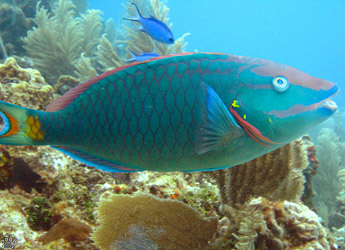 |
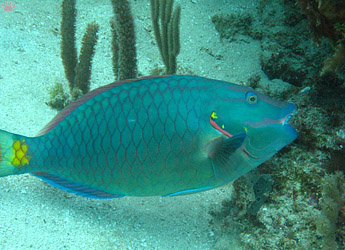 |
| Stoplight parrotfish (Sparisoma viride), Utila I. Parrotfishes are grazers, important for the reef ecosystem. |
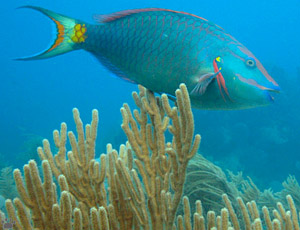
Adult stoplight parrotfish, Utila I. |
Reefs are killed by overfishing (if large fish are removed, the reefs become overgrown with algae), pollution, and warming climate. |
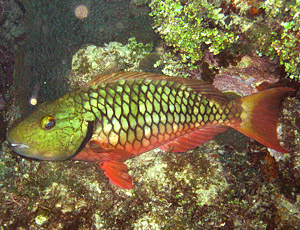
Young stoplight parrotfish, Utila I. |
 |
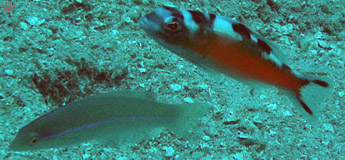 |
| Tobaccofish (Serranulus tabacarius), Utila I. |

Yellowhead jawfish (Opistognathus aurifrons), JPCRSP. |
The best places in Florida to see reef fishes are Dry Tortugas National Park and the reefs on the southern side of the Keys. Other coasts have small, patchy reefs, although you can still see many beautiful species there. |
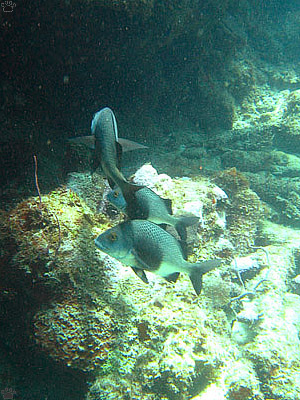
Sailors choice (Haemulon parra), Utila I. |

Schoolmaster (Lutjanus apodus), Utila I. |
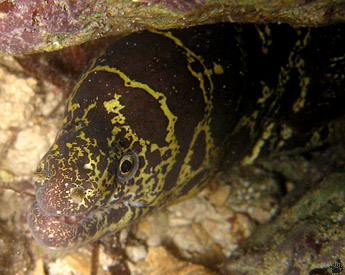
Chain moray (Echidna catenata), Utila I. |
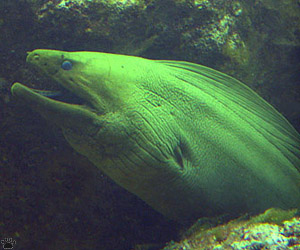
Green moray (Gymnothorax funebris ), Dry Tortugas National Park. |
It is generally difficult nowadays to see very large fish on Florida's reefs, but moray eels are still very common on reefs and wrecks. |
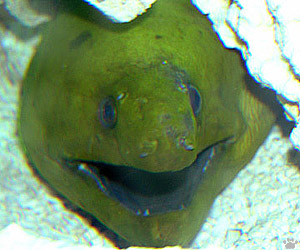
Green moray, off Miami Beach. |
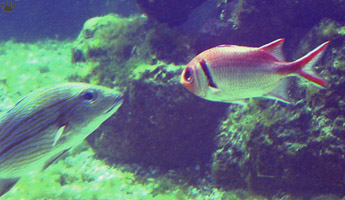
Blackbar soldierfish (Myripristis jacobus) and a grunt (Haemulon sp.), DTNP. |
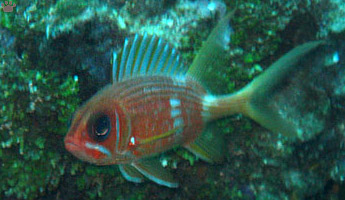
Longspine squirrelfish (Holocentrus rufus), Utila I. |
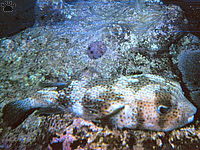
Porcupinefish (Diodon hystrix), JPCRSP. |
Up to 120 fish species live on Florida's coral reefs, and at least a hundred more visit them regularly. You can normally see 25-40 species on one dive. All of them occur in other parts of the Caribbean, too. One reason for such relatively low diversity is that these reefs have nearly died off during the last Ice Age. |
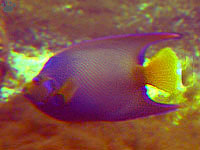
Queen angelfish (Holacanthus ciliaris), DTNP. |

Great barracuda (Sphyraena barracuda), Utila I. |

Great barracuda, Biscayne National Park. |
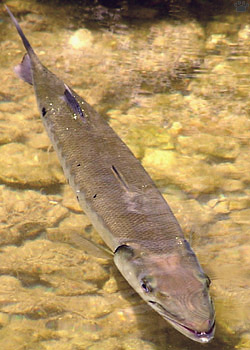
Great barracuda, Biscayne National Park. |
As the last coral reefs of Florida are rapidly dying, wrecks become the best places to see large fish. There are dozens of historical and artificial wrecks; the latter are created specifically to improve fish habitat and promote diving business. Shipwrecks are great places to see predatory fish such as moray eels, barracudas, jacks, and if you are lucky, sharks. Sandy patches between the reefs can have rays and sawfish, although the latter are now very rare in Florida. |
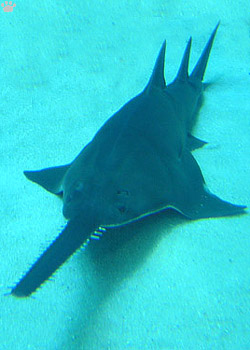
Largetooth sawfish (Pristis perotteti), Dominican Republic. |
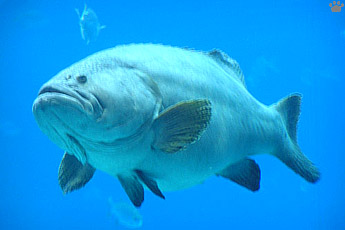 |
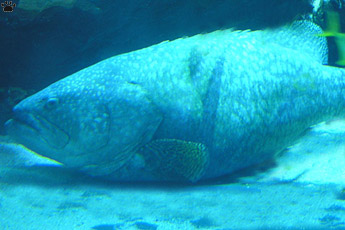 |
| Goliath grouper (Epinephelus itajara) at a wreck, off Key Largo. |
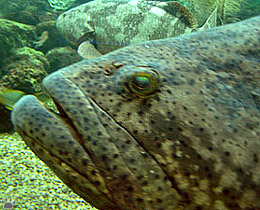
Goliath groupers at a wreck, off Key West. |
An impressive resident of many wrecks off the Keys is the Goliath grouper. It used to be called "jewfish", but the name was changed for being "potentially offensive". I'm ethnically Jewish, and I swear I've never been offended by it. |
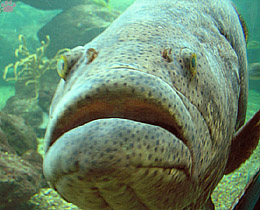
Goliath grouper at a wreck, off Key West. |
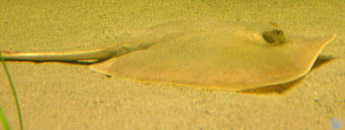
Southern stingray (Dasyatis americana), Key West National Wildlife Refuge. |
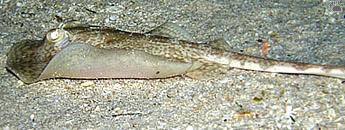
Yellow stingray (Urobatis jamaicensis), Utila I. |

Young yellow stingray, Utila I. |
Stingrays are very common in areas with sandy bottom. They are not nearly as dangerous as some recent freak accidents would suggest. |
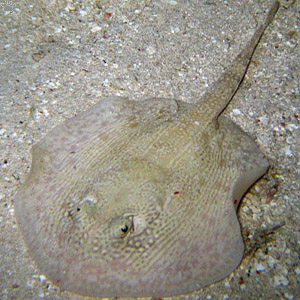
Young yellow stingray, Utila I. |
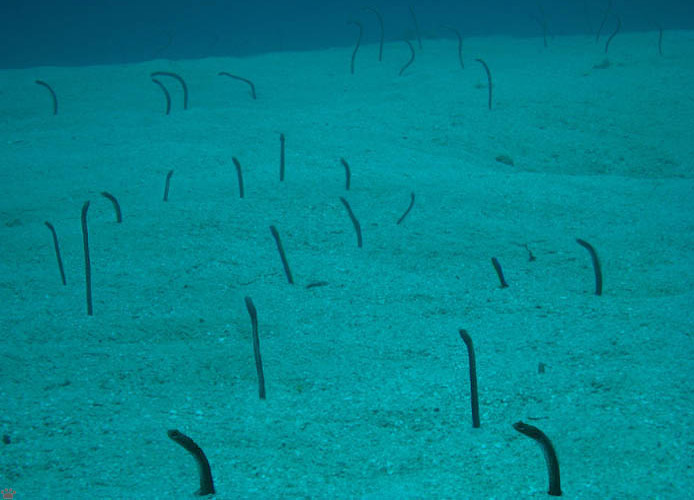
Brown garden eels (Heteroconger longissimus), Utila I. |
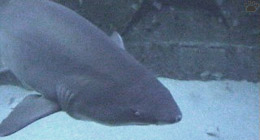
Sandbar shark (Carcharhinus plumbeus), off Miami Beach. |
The inhabitants of sandy bottom range from little garden eels and flounders (below) to impressive sandbar and sand tiger sharks. |
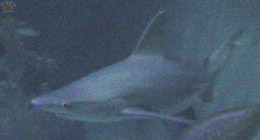
Sandbar shark at a wreck, off Miami Beach. |
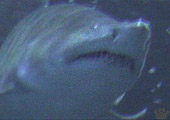 |
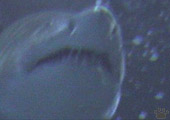 |
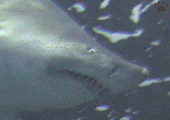 |
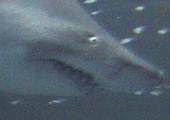 |
| Sand tiger shark (Carcharias taurus) at a shipwreck, off Miami Beach. |
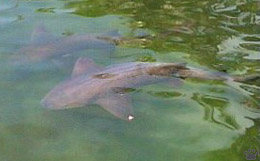
Nurse sharks (Ginglymostoma cirratum) mating. |
Nurse sharks are common in shallow waters. They can sometimes be seen from Eight-mile Bridge and from mangrove boardwalks in the outer Everglades. |

Nurse sharks mating, Everglades National Park. |
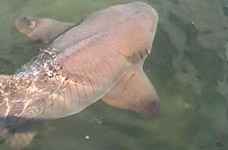 |
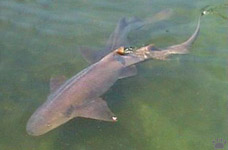 |
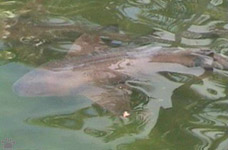 |
| Nurse sharks mating, Everglades National Park. |
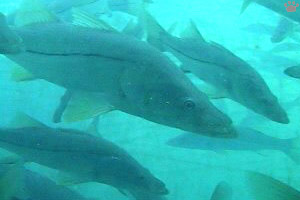
Common snooks (Ginglymostoma cirratum), Blue River. |
Florida's endless lowlands provide very productive habitats for brackish water fishes - there's a lot of these. |
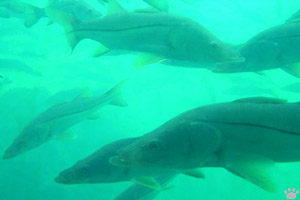
Common snooks, Blue River. |
 |
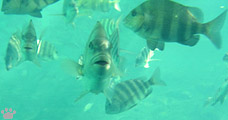
Sheepsheads (Archosargus probatocephalus),
Blue River. | 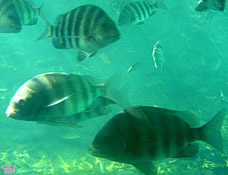 |
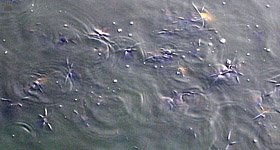
Introduced walking catfishes (Clarias batrachus), ENP. |
Northern Florida has some of the best freshwater diving sites in the US, but in southern Florida native fish diversity is very low. |

Walking catfishes gulping air during a drought, ENP. |

Florida gar (Lepisosteus platyrhincus), Big Cypress National Preserve. |
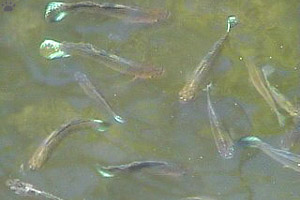
Introduced guppies (Poecilia reticulata), BCNP. |
Nowadays most fishes of southern Florida are introduced exotics, but a few beautiful native species can still be seen. |
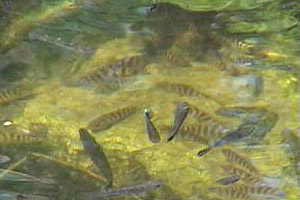
Flagfish (Jordanella floridae), BCNP. |

Juvenile peacock flounder (Bothus lunatus), Utila I. |
Part 25. Butterflies
Back to Part 23
Home
|



















































